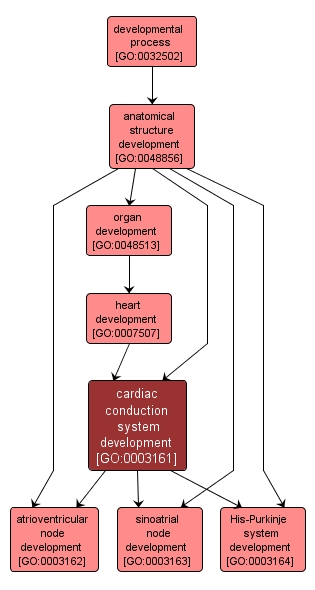GO TERM SUMMARY
|
| Name: |
cardiac conduction system development |
| Acc: |
GO:0003161 |
| Aspect: |
Biological Process |
| Desc: |
The process whose specific outcome is the progression of the cardiac conduction system over time, from its formation to the mature structure. The cardiac conduction system consists of specialized cardiomyocytes that regulate the frequency of heart beat. |
Synonyms:
- heart conduction system development
- cardiac impulse conducting system development
|
|

|
INTERACTIVE GO GRAPH
|














